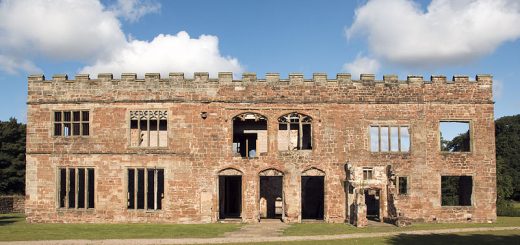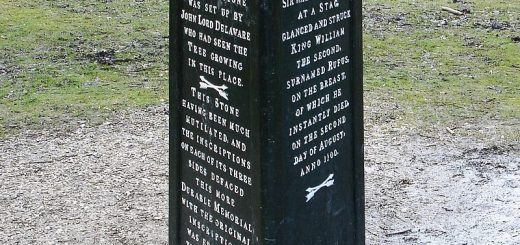Farmers Sacrifice Seven Year Old Girl For Good Crop (2011)
The following article entitled ‘Farmers sacrifice 7-yr-old girl for good crop, held’ appeared in the Times of India on 3 January 2012. It concerns the alleged human sacrifice of a young child as an offering to ensure a successful harvest.
RAIPUR: Two farmers from Bijapur district have been arrested for allegedly killing a seven-year old girl to offer her body part as a sacrifice to God for good crops, police said on Monday.
Two farmers, Padam Sukku and Pignesh Kujur, have been arrested for killing the girl, Lalita, in anticipation of good crops, Additional SP of Bijapur district BPS Rajbhanu said. Lalita had gone missing on the night of October 21 last year, following which, her father Budhram Tati had registered a missing person’s complaint with the police. Her body was found on October 27 (2011).
During the investigation, police came to know that Lalita had been murdered and last week, police registered a case of murder and arrested the duo in this connection. When quizzed, Sukku and Kujur admitted they had kidnapped and strangled her. They said they had removed the liver and offered it to the God at a temple. They buried her body which was retrieved by animals.




Re: Farmers Sacrifice Seven Year Old Girl For Good Crop …
Sir James George Frazer (Born 1854 – Died 1941) in ‘The Golden Bough’ (1922) describes human sacrifices to aid crops.
The Gonds of India (The Gondi or Gond people are from central India including the Chhattisgarh district concerned in the story above), a Dravidian race, kidnapped Brahman boys, and kept them as victims to be sacrificed on various occasions. At sowing and reaping, after a triumphal procession, one of the lads was slain by being punctured with a poisoned arrow. His blood was then sprinkled over the ploughed field or the ripe crop, and his flesh was devoured.
The Oraons or Uraons (or Kurukh as they call themselves) of Chota Nagpur worship a goddess called Anna Kuari, who can give good crops and make a man rich, but to induce her to do so it is necessary to offer human sacrifices. In spite of the vigilance of the British Government these sacrifices are said to be still secretly perpetrated. The victims are poor waifs and strays whose disappearance attracts no notice. April and May are the months when the catchpoles are out on the prowl. At that time strangers will not go about the country alone, and parents will not let their children enter the jungle or herd the cattle. When a catchpole has found a victim, he cuts his throat and carries away the upper part of the ring finger and the nose. The goddess takes up her abode in the house of any man who has offered her a sacrifice, and from that time his fields yield a double harvest. The form she assumes in the house is that of a small child. When the householder brings in his unhusked rice, he takes the goddess and rolls her over the heap to double its size. But she soon grows restless and can only be pacified with the blood of fresh human victims.
(The Oraons speak a Dravidian language similar to the Gondi )
But the best known case of human sacrifices, systematically offered to ensure good crops, is supplied by the Khonds or Kandhs, another Dravidian race in Bengal. Our knowledge of them is derived from the accounts written by British officers who, about the middle of the nineteenth century, were engaged in putting them down. The sacrifices were offered to the Earth Goddess. Tari Pennu or Bera Pennu, and were believed to ensure good crops and immunity from all disease and accidents. In particular, they were considered necessary in the cultivation of turmeric, the Khonds arguing that the turmeric could not have a deep red colour without the shedding of blood. The victim or Meriah, as he was called, was acceptable to the goddess only if he had been purchased, or had been born a victim—that is, the son of a victim father, or had been devoted as a child by his father or guardian. Khonds in distress often sold their children for victims, “considering the beatification of their souls certain, and their death, for the benefit of mankind, the most honourable possible.” A man of the Panua tribe was once seen to load a Khond with curses, and finally to spit in his face, because the Khond had sold for a victim his own child, whom the Panua had wished to marry. A party of Khonds, who saw this, immediately pressed forward to comfort the seller of his child, saying, “Your child has died that all the world may live, and the Earth Goddess herself will wipe that spittle from your face.” The victims were often kept for years before they were sacrificed. Being regarded as consecrated beings, they were treated with extreme affection, mingled with deference, and were welcomed wherever they went. A Meriah youth, on attaining maturity, was generally given a wife, who was herself usually a Meriah or victim; and with her he received a portion of land and farm-stock. Their offspring were also victims. Human sacrifices were offered to the Earth Goddess by tribes, branches of tribes, or villages, both at periodical festivals and on extraordinary occasions. The periodical sacrifices were generally so arranged by tribes and divisions of tribes that each head of a family was enabled, at least once a year, to procure a shred of flesh for his fields, generally about the time when his chief crop was laid down.
The mode of performing these tribal sacrifices was as follows. Ten or twelve days before the sacrifice, the victim was devoted by cutting off his hair, which, until then, had been kept unshorn. Crowds of men and women assembled to witness the sacrifice; none might be excluded, since the sacrifice was declared to be for all mankind. It was preceded by several days of wild revelry and gross debauchery. On the day before the sacrifice the victim, dressed in a new garment, was led forth from the village in solemn procession, with music and dancing, to the Meriah grove, a clump of high forest trees standing a little way from the village and untouched by the axe. There they tied him to a post, which was sometimes placed between two plants of the sankissar shrub. He was then anointed with oil, ghee, and turmeric, and adorned with flowers; and “a species of reverence, which it is not easy to distinguish from adoration,” was paid to him throughout the day. A great struggle now arose to obtain the smallest relic from his person; a particle of the turmeric paste with which he was smeared, or a drop of his spittle, was esteemed of sovereign virtue, especially by the women. The crowd danced round the post to music, and addressing the earth, said, “O God, we offer this sacrifice to you; give us good crops, seasons, and health”; then speaking to the victim they said, “We bought you with a price, and did not seize you; now we sacrifice you according to custom, and no sin rests with us.”
On the last morning the orgies, which had been scarcely interrupted during the night, were resumed, and continued till noon, when they ceased, and the assembly proceeded to consummate the sacrifice. The victim was again anointed with oil, and each person touched the anointed part, and wiped the oil on his own head. In some places they took the victim in procession round the village, from door to door, where some plucked hair from his head, and others begged for a drop of his spittle, with which they anointed their heads. As the victim might not be bound nor make any show of resistance, the bones of his arms and, if necessary, his legs were broken; but often this precaution was rendered unnecessary by stupefying him with opium. The mode of putting him to death varied in different places. One of the commonest modes seems to have been strangulation, or squeezing to death. The branch of a green tree was cleft several feet down the middle; the victim’s neck (in other places, his chest) was inserted in the cleft, which the priest, aided by his assistants, strove with all his force to close. Then he wounded the victim slightly with his axe, whereupon the crowd rushed at the wretch and hewed the flesh from the bones, leaving the head and bowels untouched. Sometimes he was cut up alive. In Chinna Kimedy he was dragged along the fields, surrounded by the crowd, who, avoiding his head and intestines, hacked the flesh from his body with their knives till he died. Another very common mode of sacrifice in the same district was to fasten the victim to the proboscis of a wooden elephant, which revolved on a stout post, and, as it whirled round, the crowd cut the flesh from the victim while life remained. In some villages Major Campbell found as many as fourteen of these wooden elephants, which had been used at sacrifices. In one district the victim was put to death slowly by fire. A low stage was formed, sloping on either side like a roof; upon it they laid the victim, his limbs wound round with cords to confine his struggles. Fires were then lighted and hot brands applied, to make him roll up and down the slopes of the stage as long as possible; for the more tears he shed the more abundant would be the supply of rain. Next day the body was cut to pieces.
The flesh cut from the victim was instantly taken home by the persons who had been deputed by each village to bring it. To secure its rapid arrival, it was sometimes forwarded by relays of men, and conveyed with postal fleetness fifty or sixty miles. In each village all who stayed at home fasted rigidly until the flesh arrived. The bearer deposited it in the place of public assembly, where it was received by the priest and the heads of families. The priest divided it into two portions, one of which he offered to the Earth Goddess by burying it in a hole in the ground with his back turned, and without looking. Then each man added a little earth to bury it, and the priest poured water on the spot from a hill gourd. The other portion of flesh he divided into as many shares as there were heads of houses present. Each head of a house rolled his shred of flesh in leaves, and buried it in his favourite field, placing it in the earth behind his back without looking. In some places each man carried his portion of flesh to the stream which watered his fields, and there hung it on a pole. For three days thereafter no house was swept; and, in one district, strict silence was observed, no fire might be given out, no wood cut, and no strangers received. The remains of the human victim (namely, the head, bowels, and bones) were watched by strong parties the night after the sacrifice; and next morning they were burned, along with a whole sheep, on a funeral pile. The ashes were scattered over the fields, laid as paste over the houses and granaries, or mixed with the new corn to preserve it from insects. Sometimes, however, the head and bones were buried, not burnt. After the suppression of the human sacrifices, inferior victims were substituted in some places; for instance, in the capital of Chinna Kimedy a goat took the place of the human victim. Others sacrifice a buffalo. They tie it to a wooden post in a sacred grove, dance wildly round it with brandished knives, then, falling on the living animal, hack it to shreds and tatters in a few minutes, fighting and struggling with each other for every particle of flesh. As soon as a man has secured a piece he makes off with it at full speed to bury it in his fields, according to ancient custom, before the sun has set, and as some of them have far to go they must run very fast. All the women throw clods of earth at the rapidly retreating figures of the men, some of them taking very good aim. Soon the sacred grove, so lately a scene of tumult, is silent and deserted except for a few people who remain to guard all that is left of the buffalo, to wit, the head, the bones, and the stomach, which are burned with ceremony at the foot of the stake.
In these Khond sacrifices the Meriahs are represented by our authorities as victims offered to propitiate the Earth Goddess. But from the treatment of the victims both before and after death it appears that the custom cannot be explained as merely a propitiatory sacrifice. A part of the flesh certainly was offered to the Earth Goddess, but the rest was buried by each householder in his fields, and the ashes of the other parts of the body were scattered over the fields, laid as paste on the granaries, or mixed with the new corn. These latter customs imply that to the body of the Meriah there was ascribed a direct or intrinsic power of making the crops to grow, quite independent of the indirect efficacy which it might have as an offering to secure the good-will of the deity. In other words, the flesh and ashes of the victim were believed to be endowed with a magical or physical power of fertilising the land. The same intrinsic power was ascribed to the blood and tears of the Meriah, his blood causing the redness of the turmeric and his tears producing rain; for it can hardly be doubted that, originally at least, the tears were supposed to bring down the rain, not merely to prognosticate it. Similarly the custom of pouring water on the buried flesh of the Meriah was no doubt a rain-charm. Again, magical power as an attribute of the Meriah appears in the sovereign virtue believed to reside in anything that came from his person, as his hair or spittle. The ascription of such power to the Meriah indicates that he was much more than a mere man sacrificed to propitiate a deity. Once more, the extreme reverence paid him points to the same conclusion.
Major Campbell speaks of the Meriah as “being regarded as something more than mortal,” and Major Macpherson says, “A species of reverence, which it is not easy to distinguish from adoration, is paid to him.” In short, the Meriah seems to have been regarded as divine. As such, he may originally have represented the Earth Goddess or, perhaps, a deity of vegetation; though in later times he came to be regarded rather as a victim offered to a deity than as himself an incarnate god. This later view of the Meriah as a victim rather than a divinity may perhaps have received undue emphasis from the European writers who have described the Khond religion. Habituated to the later idea of sacrifice as an offering made to a god for the purpose of conciliating his favour, European observers are apt to interpret all religious slaughter in this sense, and to suppose that wherever such slaughter takes place, there must necessarily be a deity to whom the carnage is believed by the slayers to be acceptable. Thus their preconceived ideas may unconsciously colour and warp their descriptions of savage rites.